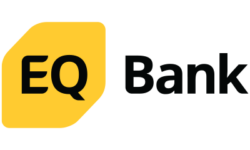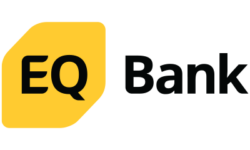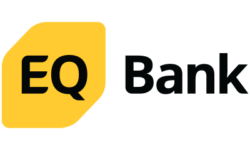Ask MoneySense
Should you cash out some of your RRIF monies to pay down credit card debt or take out a loan at a bank or private lending? Thank you.
—Marcia E.
Does it make sense to pay off debt with savings or take out a loan?
Thank you for your question, Marcia. You’ve worked hard to save for retirement, but now you’re staring down a credit-card balance and wondering if your registered retirement income fund (RRIF) or other retirement savings could cover it. I hear this question a lot as a credit counsellor, and it’s one that comes with a lot of practical considerations and emotional weight. After years of saving for your retirement, using that money to deal with debt can feel like a big step, and it’s not always clear if it’s the best choice. I’ll walk you through what to know before dipping into your savings, including the financial impact and how different options might affect your future income and benefits.
Comparing interest rates for debt vs. savings
Interest rates on credit card balances are some of the highest out there, so it’s understandable to want to pay off that debt as soon as possible. Using retirement savings like a smart solution, but it’s important to know what you’d be giving up.
“We often see retirees feeling pressured to solve a short-term debt issue by creating a long-term cash-flow problem” says Bruce Sellery, CEO at Credit Canada and the author of Moolala Guide to Rockin’ Your RRSP (Figure 1 Publishing, 2018). “It’s important to step back and look at the full picture.”
Taking money out of your registered retirement savings plan (RRSP) and/or RRIF means you’ll pay income tax on that amount and it can reduce your income in retirement. It could also change the amount of government benefits you could receive, like the Guaranteed Income Supplement (GIS) or Old Age Security (OAS), which are based on your income.
This decisions can have a lasting impact on your retirement savings, so it’s worth taking the time to carefully weigh the long-term implications before dipping into your savings.
How registered account (and pension) withdrawals work
When it comes to using retirement savings to pay off credit-card debt, not all retirement accounts work the same way. Here’s a breakdown, but always check with your advisor
- RRIF: This registered account requires you to take out a minimum amount each year, but every dollar you withdraw is fully taxable. So, if you’re thinking about taking out more than the minimum amount to pay off any debt, keep in mind that it will be added to your annual income, which can affect income-tested government benefits like the GIS and OAS. For example, if your income exceeds $143,000, OAS will be clawed back and if your income is above $87,734, you will need to repay a portion of your OAS.
- RRSP: Withdrawing from an RRSP also means paying tax on the amount you take out. The amount you withdraw will be added to your yearly income, which could push you into a higher tax bracket. This means you’ll pay more in taxes. Plus, once the money is taken out, it stops growing—so you miss out on any future gains from interest or investments.
- TFSA: Tax-free savings accounts (TFSAs) are the most flexible when it comes to withdrawals. You won’t pay any tax on the money you take out and it won’t affect your eligibility for government benefits. However, using your TFSA for debt repayment means you’re using up a tax-friendly savings space that could be hard to rebuild, especially on a fixed income.
- LIRAs and pensions: Locked-in retirement accounts (LIRAs) and pensions are typically more difficult to access, and they’re designed to provide steady income throughout retirement. Using these funds to pay off debt involves strict rules, paperwork, and sometimes penalties, making them a less practical option for covering short-term needs.
Resource highlight
LoanFinder is moments away from showing your personalized loan matches
In under 60 seconds, get matched with a personalized list of loan providers based on your needs and approval likelihood. No SIN required.
Powered by ratehub.ca
Using a loan to pay off debt
If you’re thinking about ways to tackle your credit-card debt without dipping into your retirement savings, a loan or line of credit from a bank might be a good alternative. These options usually come with lower interest rates (6% and up) than credit cards (19.99% to 23.99%, which can help you pay down the balance faster and save money on interest. You can also shop around for low-rate credit cards offering promotional interest rates you may be eligible for.
However, it’s important to keep in mind that any loan means added monthly payments—and if you’re on a fixed income, that may be tough to manage. Be especially cautious with private lenders, as they often charge higher interest rates and come with riskier terms. While a loan might help in some cases, it’s not always the right fit, especially if repayment would put too much strain on your budget. “When someone is on a fixed income, every dollar matters. The right strategy can help preserve your savings and reduce debt,” says Sellery.
Also read
Best low interest credit cards in Canada
The importance of budgeting
Getting serious about budgeting can help free up a cash surplus to pay off your credit-card debt and avoid using your retirement savings. Start by creating a realistic budget that helps you keep track of your income and expenses. This will give you a clear picture of your spending habits and where you might be able to cut back. Those savings can then be directed to your debt payments, utilizing either the avalanche or snowball method. Using budgeting tools, including MoneySense’s free Excel budget template, Credit Canada’s free Budget Planner + Expense Tracker, or apps like Butterfly, can provide insights into your spending patterns and ensure accountability to help you reach your financial goals.
Consider a debt-consolidation program
If there is no way to budget yourself out of credit card debt, it might be worth considering a debt-consolidation program (DCP) through a non-profit credit counselling agency. These programs combine your unsecured debts into a single monthly payment, often with little or no interest. This allows for more of your money to go directly toward paying down what you owe, so you can speed up your path to becoming debt-free. While enrolling in a program will have a temporary impact on your credit score, it’s generally less severe than missing payments or continuing to carry high balances.
“A debt management program can reduce or eliminate interest and help you pay off your credit card debt without touching your retirement savings,” says Sellery.
How can you pay off credit card debt
Here’s a quick summary of your options when it comes to using retirement savings to pay off credit-card debt:
| Option | Pros | Cons |
|---|---|---|
| Withdraw from RRSP/RRIF | Immediate access to fundsDebt paid off fast | Taxable income May reduce GIS/OASLess money later |
| Withdraw from TFSA | No tax on withdrawalNo impact on benefits | Depletes flexible savingsLost future growth |
| Take out a loan | Lower interest than credit cards (if taken from a bank) | Adds new monthly paymentsRisk of denial or high interest |
| Debt-consolidation program (DCP) | No new debtInterest reduced or eliminated | Requires regular monthly paymentsAffects credit score temporarily |
| File for bankruptcy or a consumer proposal | Last 12 months of contributions are exempt from seizure Potential debt reduction or forgiveness | Requires individual to be insolventMajor impact to credit |
Case Study: Why one retiree didn’t use his RRIF to pay off debt
To better understand how this decision plays out in real life, meet Kenneth, a retired factory worker in his mid-70s who found himself facing a difficult financial situation. He had quietly been struggling with a gambling addiction for years. Out of fear and shame, he hadn’t told his wife and adult children—but his debt had grown to $35,000 across credit cards and a line of credit, and it was becoming impossible to manage on his pension alone.
With funds available in his RRIF, Kenneth initially considered making a large withdrawal to wipe out the debt. But after speaking with a certified credit counsellor, he realized the long-term costs were too high. Adding $35,000 to his $65,000 annual income would significantly increase his tax bill, reduce his eligibility for tax credits and trigger a partial clawback of his OAS.
Instead, Kenneth enrolled in a debt-consolidation program through Credit Canada. This allowed him to reduce the interest on his debts and make one affordable monthly payment over four-and-a-half years, without tapping into his retirement savings.
Key questions to ask before making a decision
Before using your retirement savings to pay off credit card debt, ask yourself the following:
- Can I afford to reduce my future monthly income? Taking money out of your retirement savings now means you’ll have less to draw from later, which could make it harder to cover day-to-day expenses in the future.
- What’s the tax impact of withdrawing this money? RRSP and RRIF withdrawals count as income and could push you into a higher tax bracket, meaning you’ll owe more come tax time.
- Will I lose access to any government benefits? A higher income from withdrawals could reduce or even eliminate benefits like the GIS and OAS.
- Are there better alternatives? Consider all your options before dipping into your retirement funds, including taking out a lower-interest loan or a line of credit. If you’re unsure, speak to a financial professional.
Taking the time to think through these questions can help you avoid unintended consequences and make the choice that’s right for you, both now and in the long term.
Credit Canada is here to help
Marcia, there’s no one correct way answer to your question. Deciding whether to use your RRIF to pay off credit-card debt or looking at other options like debt consolidation depends on your overall financial situation and long-term goals. Regardless of how you choose to handle the debt, don’t let stress push you into a quick decision that could affect your future.
As certified Credit Counsellors with Credit Canada, we can help you understand your situation and offer personalized advice on how to manage debt so you can build a more secure financial future. We can walk you through your options, help you understand the potential impacts, and work with you to create a plan that supports your retirement goals. Contact us today for free, non-judgmental advice tailored to your financial situation.
Read more about managing credit:
- Should you pay off student debt before investing?
- Couples and credit scores: How your partner’s credit can affect yours
- How to fix bad credit history: 3 steps to boost your score
- What to know before taking out a loan in Canada
This article was created by a MoneySense content partner.
This is an unpaid article that contains useful and relevant information. It was written by a content partner based on its expertise and edited by MoneySense.
The post Should I use retirement savings to pay off credit card debt? appeared first on MoneySense.





